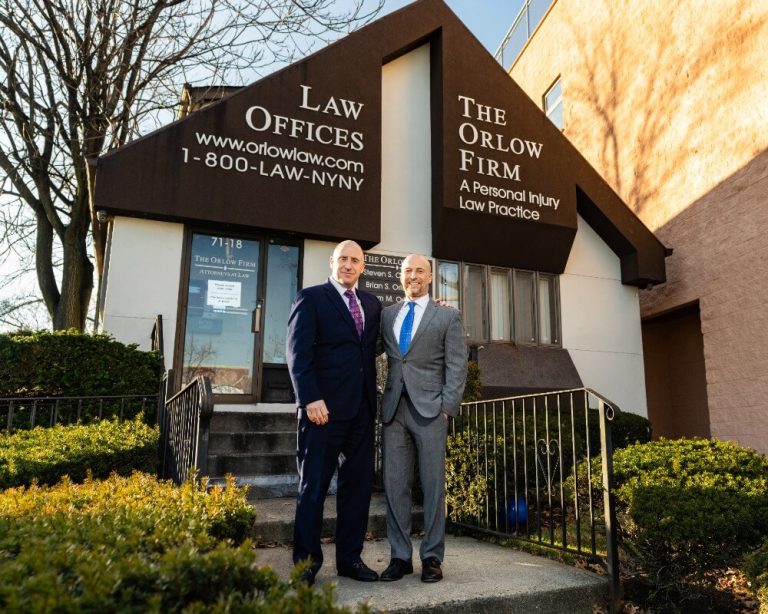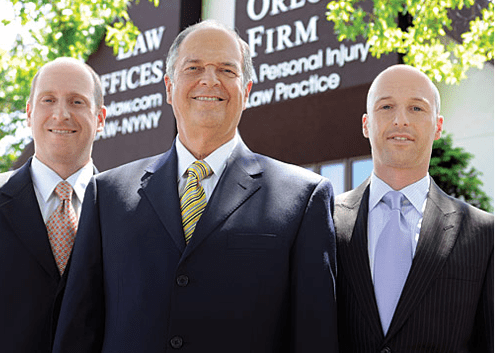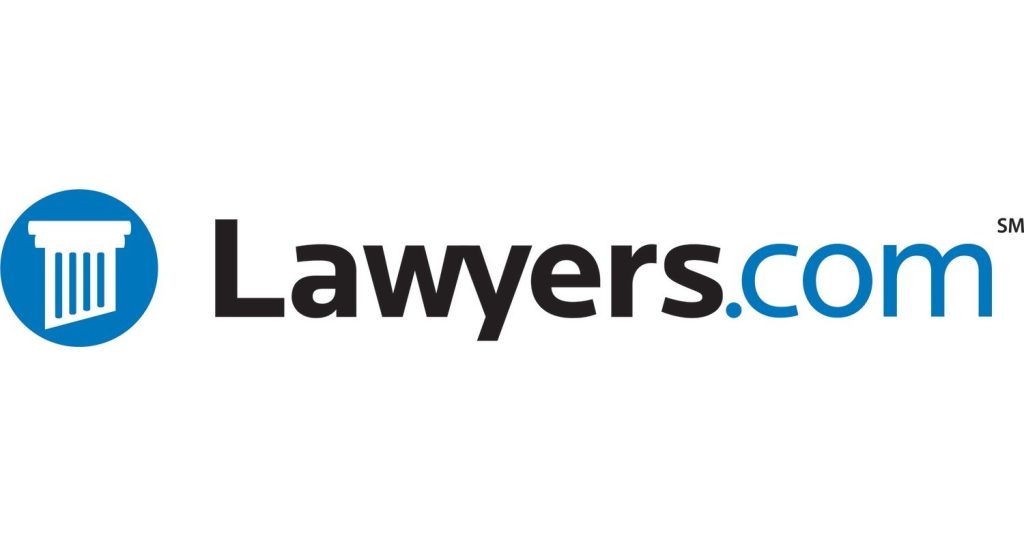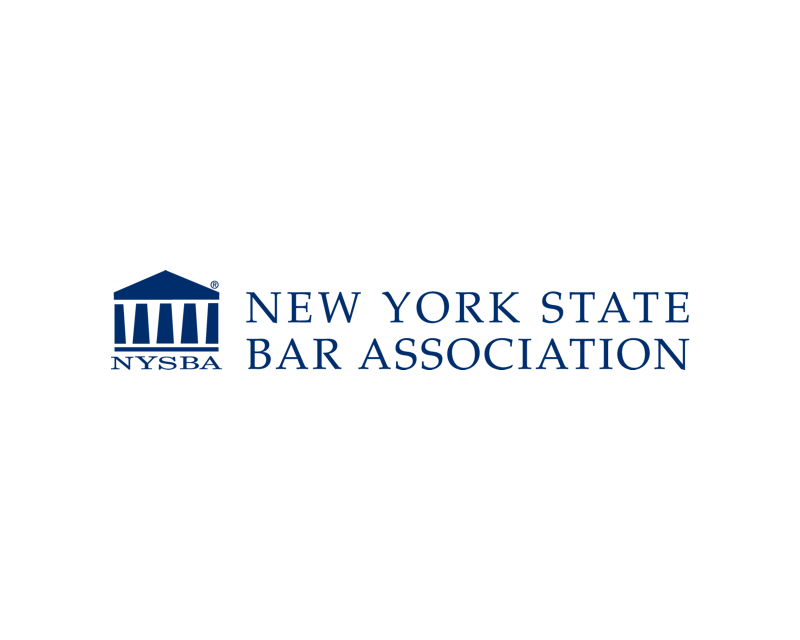The Following People Contributed to This Page
Cindy Cordova is a seasoned legal writer with over seven years of experience crafting clear, informative, and professional content for law firm websites. With a B.A. in English from Trinity Christian College, she combines her strong writing background with a deep understanding of legal topics to help firms connect with their clients through trustworthy and accessible content.
- May 26, 2025
What Compensation Can You Recover in a Construction Accident in New York?
If you’re injured in a New York construction accident, you may be entitled to compensation through workers’ compensation and potentially a personal injury lawsuit. Here’s what you need to know:
Workers’ Compensation:
- Covers medical bills and part of your lost wages.
- Benefits are available regardless of fault.
- Wage replacement is subject to a weekly cap.
Personal Injury Lawsuit (If Applicable):
- Lost Wages: Covers earnings beyond what workers’ comp provides.
- Pain and Suffering: For physical and emotional distress.
- Loss of Enjoyment of Life: For reduced ability to engage in activities.
- Disfigurement: For scarring or permanent changes.
- Medical Expenses: All reasonable and necessary treatment.
- Punitive Damages: May apply if the at-fault party acted recklessly.
New York Labor Law § 240:
- Holds owners and contractors strictly liable for height-related accidents.
- Allows recovery without needing to prove negligence.
Key Facts:
- No caps on compensatory damages in New York.
- You generally have three years from the accident to file a personal injury lawsuit.
- A construction accident attorney can help assess your case and identify any third-party liability.
Types of Compensation Available After a Construction Accident
When a construction accident occurs in New York City, victims may be entitled to several types of compensation depending on the circumstances of the incident. Understanding these categories can help you navigate the complex legal landscape and ensure you receive the financial support you need to recover. Here are the primary types of compensation available:
- Medical Expenses: Victims can recover costs associated with medical treatment, including hospital stays, surgeries, medication, physical therapy, and any necessary medical equipment. This compensation is intended to cover both current and future medical needs resulting from the accident.
- Lost Wages: If the injury prevents you from working, you may be compensated for lost income. This includes wages lost during recovery and, in cases of severe injury, potential future earnings if you are unable to return to your previous employment.
- Pain and Suffering: These are non-economic damages intended to compensate for the physical pain and emotional distress caused by the accident. Calculating pain and suffering can be complex, as it considers the severity of the injury and its impact on your quality of life.
- Disability and Disfigurement: If the accident results in a permanent disability or disfigurement, you may receive additional compensation. This aims to address the long-term impact on your physical abilities and appearance.
- Loss of Consortium: In some cases, the injured party’s spouse may be entitled to compensation for loss of companionship and support due to the injury. This is considered a non-economic damage.
- Vocational Rehabilitation: If you are unable to return to your previous job, you might be eligible for compensation to cover the costs of vocational training or education to help you transition to a new career.
- Out-of-Pocket Expenses: This includes any additional costs incurred due to the accident, such as transportation to medical appointments, home modifications, or hiring help for household tasks you can no longer perform.
In New York City, construction accident victims may pursue compensation through workers’ compensation claims, personal injury lawsuits, or third-party claims against entities other than their employer. Each path has its own procedures and potential limitations, making it crucial to understand which types of compensation are available to you. If you or a loved one has been injured in a construction accident, contacting The Orlow Firm at (646) 647-3398 can provide you with personalized guidance tailored to your situation.
Medical Expenses: Coverage for Treatment and Rehabilitation
After a construction accident in New York City, one of the primary concerns is covering the medical expenses that arise from treating and rehabilitating injuries. Understanding what compensation is available for medical costs can provide significant relief during a challenging time. Here’s what you need to know about recovering medical expenses after a construction accident.
Types of Medical Expenses Covered
In a construction accident, medical expenses can quickly accumulate. Fortunately, there are various avenues through which you can seek compensation for these costs:
- Immediate Medical Treatment: This includes emergency room visits, surgeries, and any immediate care required after the accident. Prompt medical attention is crucial not only for your health but also for documenting your injuries, which is essential for any claims.
- Ongoing Medical Care: Coverage extends to follow-up visits, specialist consultations, and any necessary treatments such as physical therapy or chiropractic care.
- Rehabilitation Services: If your injuries require long-term rehabilitation, such as occupational or speech therapy, these costs can also be covered.
- Prescription Medications: Compensation can include the cost of medications prescribed to manage pain or assist in recovery.
- Medical Equipment: Necessary medical aids, such as crutches, wheelchairs, or prosthetics, are also considered in compensation claims.
Workers’ Compensation and Medical Expenses
In New York, workers’ compensation typically covers medical expenses for injuries sustained on the job, regardless of who was at fault. This means that you can receive coverage for your medical bills without having to prove negligence. However, workers’ compensation does not cover all types of damages, such as pain and suffering, which may require a separate personal injury claim.
Personal Injury Claims for Additional Compensation
In some cases, you may be eligible to file a personal injury lawsuit against a third party, such as a contractor or equipment manufacturer, if their negligence contributed to your accident. This type of claim can provide additional compensation beyond what workers’ compensation offers, potentially covering:
- Full Recovery of Medical Costs: If your medical expenses exceed the limits of workers’ compensation, a personal injury claim can help cover the remaining costs.
- Non-Economic Damages: Compensation for pain and suffering, emotional distress, and loss of enjoyment of life can be pursued through a personal injury claim.
Steps to Take for Medical Expense Coverage
To ensure you receive the compensation you deserve for medical expenses, consider the following steps:
- Seek Immediate Medical Attention: Always prioritize your health and safety by getting medical help right away. This also serves to document your injuries for any claims.
- Keep Detailed Records: Maintain comprehensive records of all medical treatments, prescriptions, and related expenses. This documentation will be crucial for substantiating your claim.
- Consult with a Legal Professional: Navigating the complexities of workers’ compensation and personal injury claims can be challenging. Consulting with an experienced attorney can help ensure you understand your rights and the compensation you are entitled to.
If you or a loved one has been injured in a construction accident in New York City and need assistance with medical expense claims, The Orlow Firm is here to help. Our dedicated team can guide you through the process and advocate for the compensation you deserve. Contact us at (646) 647-3398 for a consultation.
Lost Wages and Future Earnings: What You Need to Know
After a construction accident in New York City, the financial impact can be significant, especially if the injuries prevent you from working. Understanding how to recover lost wages and future earnings is crucial for ensuring you can maintain financial stability during your recovery period.
Lost Wages: Immediate Financial Support
Lost wages refer to the income you miss out on due to your inability to work following a construction accident. In New York, if you’re injured on the job, you may be entitled to compensation for these lost wages through several avenues:
- Workers’ Compensation: This is a no-fault insurance system that employers in New York are required to carry. It provides benefits for lost wages, usually covering about two-thirds of your average weekly wage, up to a certain limit. The aim is to provide some financial relief while you’re unable to work.
- Personal Injury Claims: If a third party (someone other than your employer) is responsible for your accident, you may file a personal injury lawsuit. This could potentially cover the full amount of your lost wages, beyond what workers’ compensation offers.
Future Earnings: Planning for Long-Term Impact
In more severe cases, injuries from construction accidents can impact your ability to earn a living in the future. Calculating future earnings involves estimating the income you would have earned if the accident had not occurred. Factors considered include:
- Your Age and Life Expectancy: Younger workers may face greater losses over time due to a longer work-life expectancy.
- Your Occupation and Skill Level: Highly skilled workers or those in specialized fields may experience more significant financial impacts if they cannot return to their previous roles.
- Potential for Career Advancement: Projected promotions or raises that could have occurred had the accident not happened are also considered.
In New York, recovering compensation for future earnings typically requires a personal injury lawsuit, where demonstrating the impact of the injury on your career prospects is essential. This often involves expert testimony from economists or vocational experts.
Steps to Take
If you are dealing with lost wages or future earnings issues after a construction accident, consider the following steps:
- Document Everything: Keep detailed records of your income before the accident, medical reports, and any correspondence with your employer.
- Consult with Legal Professionals: Navigating the complexities of workers’ compensation and personal injury claims can be challenging. A knowledgeable attorney can help you understand your rights and ensure you pursue all available compensation.
- File Claims Promptly: There are deadlines for filing workers’ compensation and personal injury claims, so it’s crucial to act quickly to preserve your rights.
Understanding your options for recovering lost wages and future earnings is vital for maintaining your financial well-being after a construction accident. If you have questions or need assistance, The Orlow Firm is here to help. Contact us at (646) 647-3398 to discuss your case with our compassionate and experienced legal team.
Pain and Suffering: Calculating Non-Economic Damages
When involved in a construction accident in New York City, one of the compensation categories you may be entitled to is for “pain and suffering.” This type of compensation falls under non-economic damages, which are distinct from economic damages like medical bills and lost wages. Calculating pain and suffering can be complex, as it involves assessing the intangible effects of an injury on your quality of life.
Understanding Pain and Suffering
Pain and suffering encompass the physical discomfort and emotional distress experienced due to an injury. This can include chronic pain, mental anguish, depression, anxiety, and the overall reduction in enjoyment of life. In a bustling city like New York, where life’s pace is rapid, such impacts can significantly alter one’s lifestyle and future.
How Pain and Suffering is Calculated
There is no fixed formula for calculating pain and suffering in construction accident claims, but several methods are commonly used:
- Multiplier Method: This approach involves multiplying the total economic damages (like medical expenses and lost wages) by a number usually ranging from 1.5 to 5. The multiplier reflects the severity of the injury and its impact on the victim’s life.
- Per Diem Method: Here, a daily rate is assigned to the victim’s pain and suffering, which is then multiplied by the number of days the victim is expected to suffer.
Factors influencing the calculation include the nature and extent of the injuries, recovery time, the impact on daily activities, and the credibility of the victim’s testimony.
Legal Considerations in New York City
In NYC, the subjective nature of pain and suffering means that evidence plays a crucial role. Medical records, personal diaries documenting pain levels, and expert testimony can all support your claim. It’s important to work with legal professionals who understand how to effectively present this evidence to maximize your compensation.
Keep in mind that New York does not cap non-economic damages in personal injury cases, allowing for potentially substantial awards for pain and suffering, especially in severe cases.
If you or a loved one has suffered a construction accident injury in New York City, understanding your rights to compensation for pain and suffering is crucial. For guidance tailored to your specific situation, contact The Orlow Firm at (646) 647-3398. Our dedicated team is here to help you through this challenging time.
Third-Party Claims in Construction Accident Cases
In the context of construction accidents, a third-party claim refers to a legal action you can take against someone other than your employer or a co-worker who may be responsible for your injuries. While workers’ compensation benefits cover medical expenses and a portion of lost wages, they generally do not provide compensation for pain and suffering or other non-economic damages. This is where third-party claims come into play, offering an opportunity to pursue additional compensation.
In New York City, construction sites are bustling hubs of activity often involving multiple contractors, subcontractors, suppliers, and equipment manufacturers. This complexity means that multiple parties may share responsibility for maintaining safety standards. If any of these parties fail in their duty, they could be held liable through a third-party claim.
- Equipment Manufacturers: If a piece of machinery or equipment malfunctions due to a design or manufacturing defect, you may have a claim against the manufacturer. For instance, if a safety harness fails during a fall, causing injury, the manufacturer could be liable.
- Subcontractors: If another subcontractor on the site fails to adhere to safety protocols, leading to your injury, you might be able to file a third-party claim. For example, if a subcontractor negligently operates machinery that causes an accident, they could be responsible.
- Property Owners: In some cases, the owner of the property where the construction is taking place could be liable if they failed to address known hazards or comply with safety regulations.
To successfully pursue a third-party claim, it’s crucial to establish that the third party was negligent and that their negligence directly caused your injury. This often requires thorough investigation and gathering of evidence, including safety records, witness statements, and expert testimonies.
It’s important to note that pursuing a third-party claim does not affect your workers’ compensation benefits. You can receive both concurrently, which can be essential for covering the full scope of your damages, especially when dealing with severe injuries that impact your quality of life.
If you’re considering a third-party claim following a construction accident in New York City, it’s advisable to consult with a knowledgeable attorney who can guide you through the complexities of the legal process. At The Orlow Firm, we are committed to helping construction accident victims explore all avenues of compensation. For personalized advice tailored to your situation, please contact us at (646) 647-3398.
Workers’ Compensation vs. Personal Injury Claims: Key Differences
When it comes to construction accidents in New York City, understanding the differences between Workers’ Compensation and Personal Injury Claims is crucial for determining the type and extent of compensation you might be eligible to receive. Here, we break down the key distinctions to help you navigate your options effectively.
Workers’ Compensation:
- No-Fault System: Workers’ compensation operates on a no-fault basis, meaning you can receive benefits regardless of who was at fault for the accident. This system is designed to ensure that employees injured on the job receive prompt medical care and wage replacement.
- Benefits Provided: Workers’ compensation typically covers medical expenses, a portion of lost wages, and rehabilitation costs. In New York, it also includes benefits for permanent disability and death benefits for surviving family members.
- Limitations: Workers’ compensation does not cover non-economic damages such as pain and suffering. Additionally, the benefits are often capped, which might not fully cover all your financial losses.
- Employer Immunity: In exchange for these benefits, employees generally cannot sue their employer for additional damages related to the accident, except in cases involving intentional harm or gross negligence.
Personal Injury Claims:
- Fault-Based System: Unlike workers’ compensation, personal injury claims require proving that another party’s negligence or misconduct caused the accident. This could include third parties like contractors, equipment manufacturers, or property owners.
- Compensation Types: Personal injury claims can provide compensation for both economic and non-economic damages, including medical expenses, lost wages, pain and suffering, and loss of enjoyment of life.
- Pursuing a Claim: Successfully pursuing a personal injury claim often requires gathering evidence of negligence, such as witness testimony, accident reports, and expert analysis. Legal representation can be crucial in navigating these complexities.
- Potential for Higher Compensation: While more complex, personal injury claims can result in higher compensation amounts since they encompass a broader range of damages, including those not covered by workers’ compensation.
In some cases, you may be eligible to pursue both workers’ compensation benefits and a personal injury claim, known as a “third-party claim,” if a third party’s negligence contributed to your accident. Navigating these options can be complex, which is why consulting with a knowledgeable personal injury attorney is essential. At The Orlow Firm, we are dedicated to helping construction accident victims understand their rights and pursue the compensation they deserve. For personalized assistance, contact us at (646) 647-3398.
How Fault Affects Compensation in NYC Construction Accidents
In New York City, fault can influence how much you recover beyond basic workers’ compensation benefits. While workers’ comp is “no-fault,” any third-party lawsuit—against an owner, general contractor, or equipment manufacturer—requires showing who was responsible and to what degree.
Pure Comparative Negligence in New York
New York follows a pure comparative negligence rule. Your award is reduced only by your own percentage of fault—no matter how high that percentage is:
- Percentage of Fault: If you are 20 % at fault and your total damages are $100,000, you still collect $80,000.
- Recovery Even If Mostly at Fault: You can recover damages even if you are 99 % responsible; your recovery is simply reduced by that 99 %.
Multiple Liable Parties on Construction Sites
Because many parties share a construction site, fault may be spread among:
- Equipment Manufacturers: liable for defective tools or machinery.
- General Contractors / Site Managers: liable for unsafe site conditions or inadequate safety protocols.
- Property Owners: liable under Labor Law §§ 200, 240, 241(6) for failing to provide a safe workplace.
Under Labor Law § 240 (“Scaffold Law”), owners and contractors are strictly liable for height-related accidents—fault apportionment does not apply to that claim.
Workers’ Compensation vs. Third-Party Claims
- Workers’ Compensation: Pays medical bills and partial wage loss regardless of fault.
- Third-Party Lawsuit: Allows recovery for pain and suffering, full lost earnings, and other damages—but you must prove each defendant’s share of fault under pure comparative negligence.
Why Legal Guidance Matters
Assigning percentages of fault and identifying every responsible party is often complex. An experienced construction accident attorney can:
- Investigate site safety records, contracts, and equipment logs.
- Retain experts to apportion fault accurately.
- Pursue all available claims—workers’ comp plus any third-party actions—to maximize your recovery.
If you need help navigating fault and compensation after a New York construction accident, contact The Orlow Firm at (646) 647-3398 for a confidential consultation.
Steps to Take Immediately After a Construction Accident
In the aftermath of a construction accident in New York City, taking immediate and appropriate steps is crucial for ensuring your safety and preserving your rights to compensation. Here’s a detailed guide on the actions you should take:
- Seek Medical Attention Immediately: Your health and safety are the top priority. Even if injuries seem minor, it’s essential to get a medical evaluation as soon as possible. Some injuries may not be immediately apparent, and having medical documentation is vital for any future claims.
- Report the Accident: Notify your employer or site supervisor about the accident as soon as possible. In New York, employers are required to document workplace accidents, and this report will be a critical part of your workers’ compensation claim.
- Document the Scene: If you are able, take photographs of the accident site, including any equipment involved, hazardous conditions, and visible injuries. These photos can serve as vital evidence in determining the cause of the accident and supporting your claim.
- Collect Witness Information: Gather contact information from any witnesses who saw the accident occur. Their testimonies can be invaluable in corroborating your account of the incident.
- Keep Detailed Records: Maintain a file of all documents related to the accident, including medical records, accident reports, and correspondence with your employer and insurance companies. Detailed records will help streamline the claims process and support your case.
- Avoid Making Statements: Refrain from giving detailed statements about the accident to your employer, insurance adjusters, or on social media without first consulting an attorney. Statements can be misconstrued and may impact your claim negatively.
- Consult with a Personal Injury Attorney: Navigating the aftermath of a construction accident can be complex, especially when dealing with potential third-party claims or disputes over workers’ compensation. Consulting with a personal injury attorney can provide guidance on your rights and help ensure you receive the compensation you deserve. For personalized assistance, contact The Orlow Firm at (646) 647-3398.
Taking these steps promptly can significantly affect the outcome of your compensation claim, helping to secure the financial support needed for recovery and future well-being. If you have any questions or need further assistance, The Orlow Firm is here to support construction accident victims in New York City.
The Role of Insurance Companies in Construction Accident Claims
When you suffer an injury in a construction accident in New York City, insurance companies play a significant role in the compensation process. Understanding how they operate and their influence on your claim can help you navigate your case more effectively.
Insurance Companies’ Role in Construction Accident Claims
Insurance companies are often involved in construction accident claims because they provide the coverage that compensates for various damages. Here’s what you need to know about their role:
- Workers’ Compensation Insurance: In most cases, if you are injured on the job, your employer’s workers’ compensation insurance covers your medical expenses and a portion of your lost wages. This insurance is designed to provide swift financial relief without the need for litigation, but it typically does not cover pain and suffering.
- Liability Insurance: If a third party (someone other than your employer) is responsible for your injury, their liability insurance may cover additional damages. This could include contractors, equipment manufacturers, or property owners. Claims against third parties can potentially cover pain and suffering, lost future earnings, and more.
- Health Insurance: While workers’ compensation covers most workplace injuries, your health insurance might come into play if there are disputes about the coverage or if you need treatment not covered by workers’ compensation.
Challenges with Insurance Companies
Dealing with insurance companies can be challenging. They often aim to minimize payouts to protect their financial interests. Here are some common issues you might encounter:
- Claim Denials: Insurance companies may deny claims for various reasons, such as disputing the severity of injuries or arguing that the injury was not work-related.
- Low Settlement Offers: Initial settlement offers from insurance companies are often lower than what you may be entitled to. It’s crucial to evaluate these offers carefully and consider seeking legal advice before accepting.
- Delayed Payments: Insurance companies might delay payments, which can create financial strain as medical bills and other expenses accumulate.
How to Handle Insurance Companies
To effectively deal with insurance companies, consider the following steps:
- Document Everything: Keep detailed records of all communications with insurance companies, medical records, and any other relevant documents. This documentation can support your claim and provide evidence if disputes arise.
- Consult with a Legal Professional: Engaging a personal injury attorney can be invaluable. An attorney can negotiate with insurance companies on your behalf, ensuring that your rights are protected and that you receive fair compensation.
- Be Wary of Quick Settlements: Be cautious of settling too quickly, especially if the full extent of your injuries is not yet clear. A rushed settlement could prevent you from receiving adequate compensation for long-term impacts.
Understanding the role of insurance companies in construction accident claims is crucial for securing the compensation you deserve. If you have questions or need assistance navigating your claim, contact The Orlow Firm at (646) 647-3398 for personalized support and guidance.
Legal Deadlines: Statute of Limitations for Construction Accidents in NYC
In the wake of a construction accident in New York City, understanding the legal deadlines associated with filing a claim is crucial for securing the compensation you may be entitled to. These deadlines, known as the statute of limitations, dictate how long you have to take legal action following your accident. Missing these deadlines can result in losing your right to pursue a claim, making it essential to act promptly.
General Statute of Limitations
In New York, the statute of limitations for personal injury claims, including those arising from construction accidents, is generally three years from the date of the accident. This means you have three years to file a lawsuit seeking compensation for injuries sustained in the accident. However, it’s important to note that this timeframe applies to personal injury cases and may vary depending on the specifics of your situation.
Exceptions and Special Circumstances
- Claims Against Government Entities : If your construction accident involves a government entity, such as a city-owned construction site, the timeline is much shorter. You must file a notice of claim within 90 days of the accident, and the lawsuit must be filed within one year and 90 days.
- Wrongful Death Claims : If the accident resulted in a fatality, the statute of limitations for filing a wrongful death claim is two years from the date of the deceased’s death, not the accident itself.
- Minors and Incapacitated Individuals : Special rules may apply if the injured party is a minor or was incapacitated at the time of the accident, potentially extending the filing deadline.
Importance of Timely Action
Acting quickly after a construction accident is crucial. Gathering evidence, speaking with witnesses, and consulting with legal professionals should be done as soon as possible to build a strong case. Delays can lead to lost evidence and fading memories, which might weaken your claim.
Consulting with Legal Professionals
Given the complexities of construction accident claims and the various deadlines involved, consulting with a knowledgeable personal injury attorney can be invaluable. An attorney can help ensure that all necessary legal actions are taken within the appropriate timeframes, protecting your rights to compensation.
If you or a loved one has been involved in a construction accident in New York City, don’t wait to seek legal advice. Contact The Orlow Firm at (646) 647-3398 to discuss your case with our dedicated team and learn more about your options for pursuing compensation.
How The Orlow Firm Supports Construction Accident Victims in New York City

The Orlow Firm is dedicated to supporting construction accident victims in New York City with a comprehensive approach tailored to the unique challenges these cases present. Our team understands the complexities involved in construction accident claims and is committed to guiding victims through each step of the legal process.
Thorough Case Evaluation
Our first step in supporting construction accident victims is conducting a detailed evaluation of the incident. We gather all necessary evidence, including accident reports, witness statements, and photographs of the scene. This thorough investigation helps us understand the full scope of the accident and identify all liable parties, which can include contractors, property owners, equipment manufacturers, or other third parties.
Explaining Your Legal Options
Construction accidents can lead to a variety of legal claims. Our attorneys clearly explain the differences between workers’ compensation claims and personal injury lawsuits, helping you understand the potential benefits and limitations of each. We ensure you are informed about your rights and the compensation you may be entitled to under New York law.
Maximizing Compensation
We strive to maximize the compensation you recover by exploring all possible avenues. This includes pursuing workers’ compensation benefits for immediate medical expenses and lost wages, as well as filing personal injury lawsuits for additional damages such as pain and suffering, if applicable. Our team is adept at negotiating with insurance companies and, when necessary, litigating in court to secure the best possible outcome for our clients.
Personalized Client Support
At The Orlow Firm, we recognize the emotional and physical toll a construction accident can take on victims and their families. Our attorneys provide compassionate support and personalized attention throughout the legal process. We are here to answer your questions, address your concerns, and keep you updated on the progress of your case.
If you or a loved one has been injured in a construction accident in New York City, The Orlow Firm is here to help. Our team is ready to provide the guidance and support you need to pursue the compensation you deserve. For a consultation, please contact us at (646) 647-3398.
The Following People Contributed to This Page
Cindy Cordova is a seasoned legal writer with over seven years of experience crafting clear, informative, and professional content for law firm websites. With a B.A. in English from Trinity Christian College, she combines her strong writing background with a deep understanding of legal topics to help firms connect with their clients through trustworthy and accessible content.










